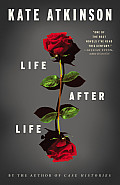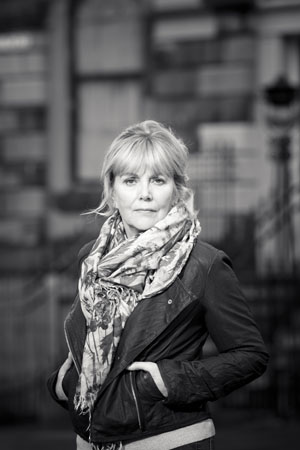 Kate Atkinson, along with all her other marvelous talents, creates great titles. I need submit only her last book for evidence. Left Early, Took My Dog. Now she brings us Life After Life, which not only suits but augments the tale inside the cover. An obvious play on “life after death,” it’s also suggestive of “one life after another, after another, after another…,” which perfectly sums up the novel’s complex and yet clear and present structure.
Kate Atkinson, along with all her other marvelous talents, creates great titles. I need submit only her last book for evidence. Left Early, Took My Dog. Now she brings us Life After Life, which not only suits but augments the tale inside the cover. An obvious play on “life after death,” it’s also suggestive of “one life after another, after another, after another…,” which perfectly sums up the novel’s complex and yet clear and present structure.
To me, it’s as if all Atkinson’s fantastic books, with their sprawling, intricate structures and layered events and sequences, have been preparations for this monumental achievement. She’s always been fond of the metaphysical poets with their paradoxes and conundrums (“Death, thou shalt die”– that sort of thing.) and she apparently has an old soul that communicates with their spirits directly.

Ursula Beresford Todd is born and dies in February, 1910, strangled by her umbilical cord. Except she doesn’t. A doctor (who couldn’t possibly be there) arrives and snips the cord post mortem. Her next death is at three years of age, when she plummets from an icy roof. She reappears in the very next chapter and successfully negotiates the same roof.
A number of other characters in the Todd family experience similar resurrections, and Atkinson places both Ursula and her siblings in a number of settings–mutually exclusive in all but the world of the imagination. Her brother succumbs to the flu in 1918, yet lives to fly bombers in WWII, for example. I was tempted sometimes to think of this as an author’s “what if” notes. What if I took the character in this direction instead of that one, or set the story here instead of there? How might it play out? (“History is all about ‘what ifs,” says one of Ursula’s nephews at one point.) Rather like what Faulkner was accused of by befuddled critics when The Sound and The Fury appeared. And there is a playful aspect to all this that’s not to ignored, but it’s not the primary experience.
When Ursula has Hitler at gunpoint (the novel’s opening scene, 1930) or is caught in a horribly brutal marriage, or performs heroic deeds during the blitz on London, she’s living out in fiction the kinds of lives we all create for ourselves in our imaginations as we pursue the existence we call “real.” And when she recalls words or images from those lives and either recognizes them or wonders where they came from [we readers recognize them. We were there with her when she was, for example, carrying on with Eva Braun], she’s connecting with that real or imagined past or future that is the life of the spirit. And when Atkinson writes this:
“Time isn’t circular,” she [Ursula} said to Dr. Kellet [her therapist/philosopher, who has a proclivity for reincarnation]. “It’s like a… palimpsest. …And memories are sometimes the future.”
She’s explaining something of the pattern of experience that Life After Life creates. Or mirrors. I’m sure there’s some rich imagery in Ursula’s name and in the fact that her father repeatedly refers to her as “little bear.” I’m not going to take the trouble to research it, but It has to be there.
When you turn the last page of Life after Life, visiting a scene in a pub, 1910, after having just come from another pub in 1945, and meeting the midwife who was to help deliver Ursula when the snow forced her to stay put sipping spirits, you know somehow the truth of that “palimpsest” remark. And you know that truly there is life after life, and you’re truly glad for it.
